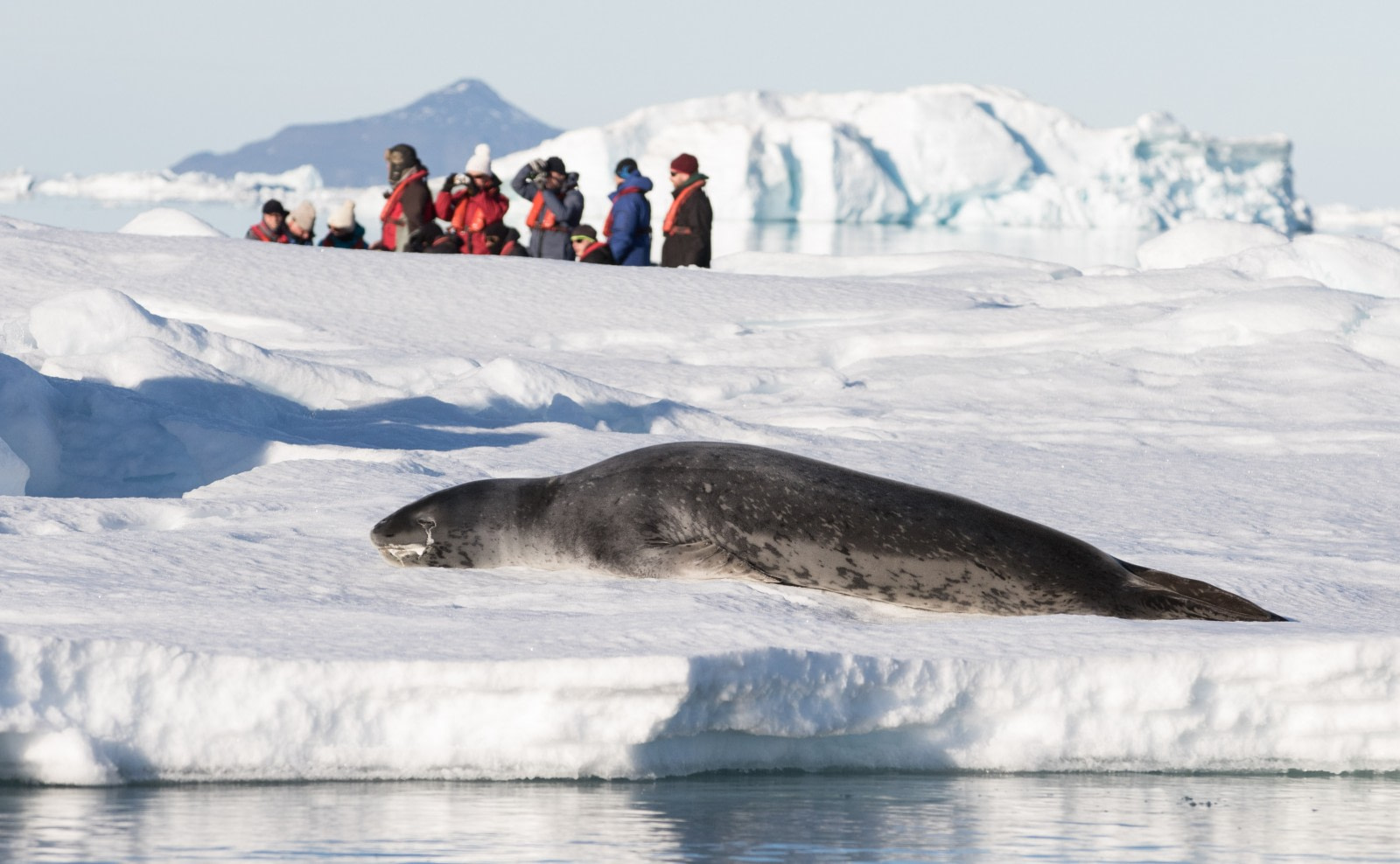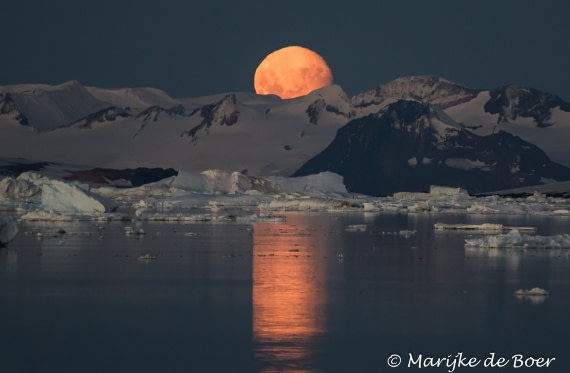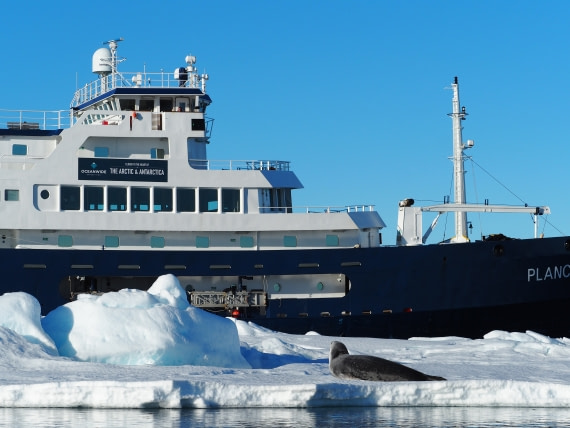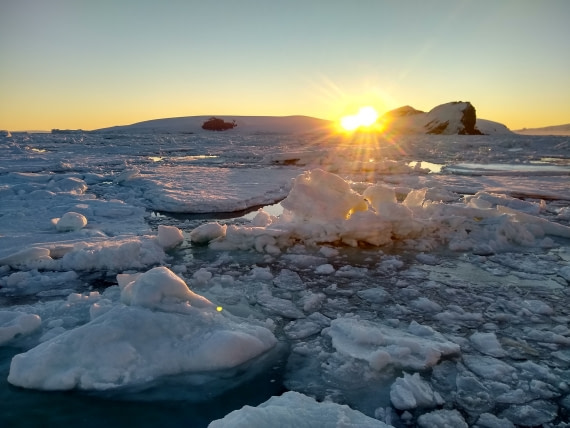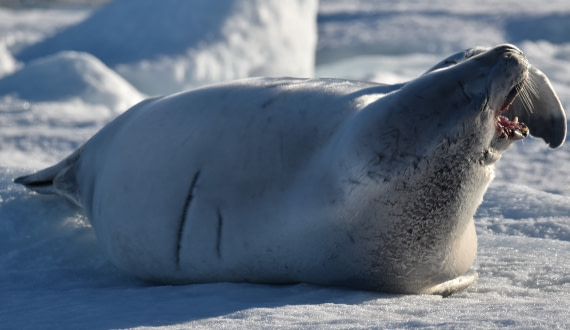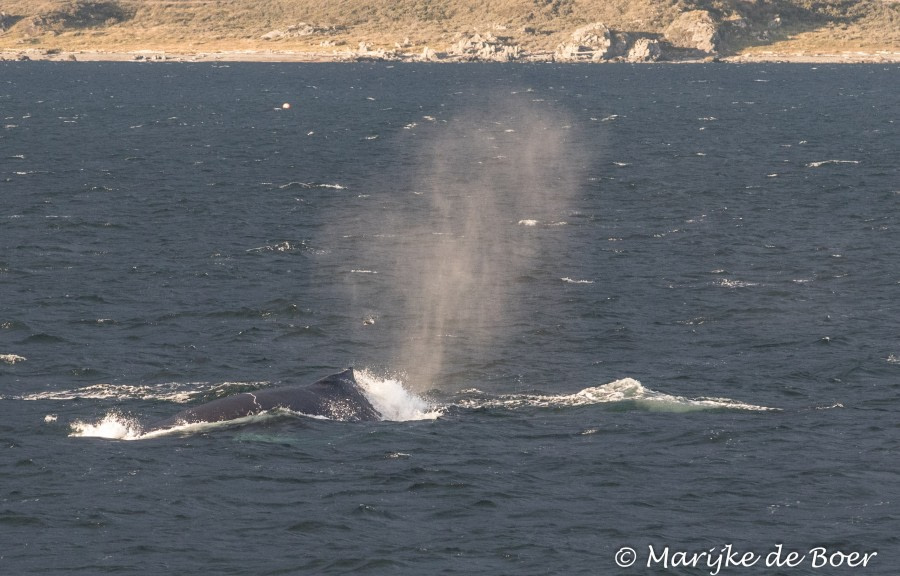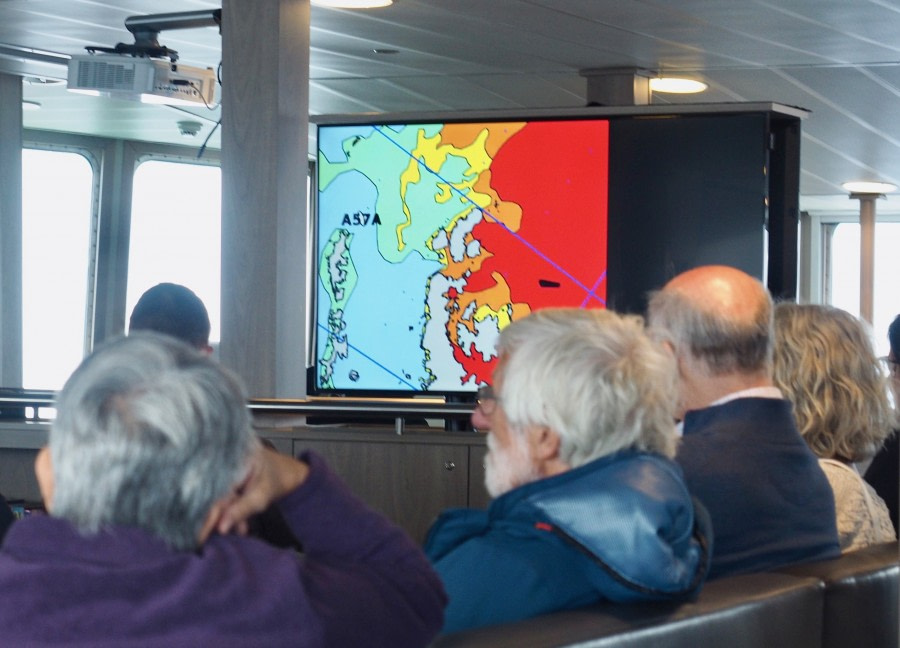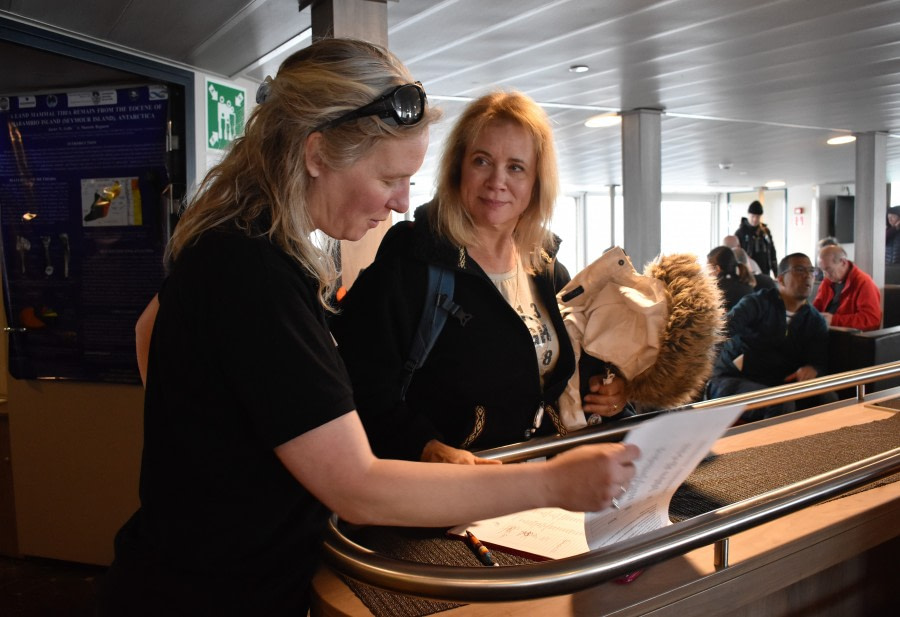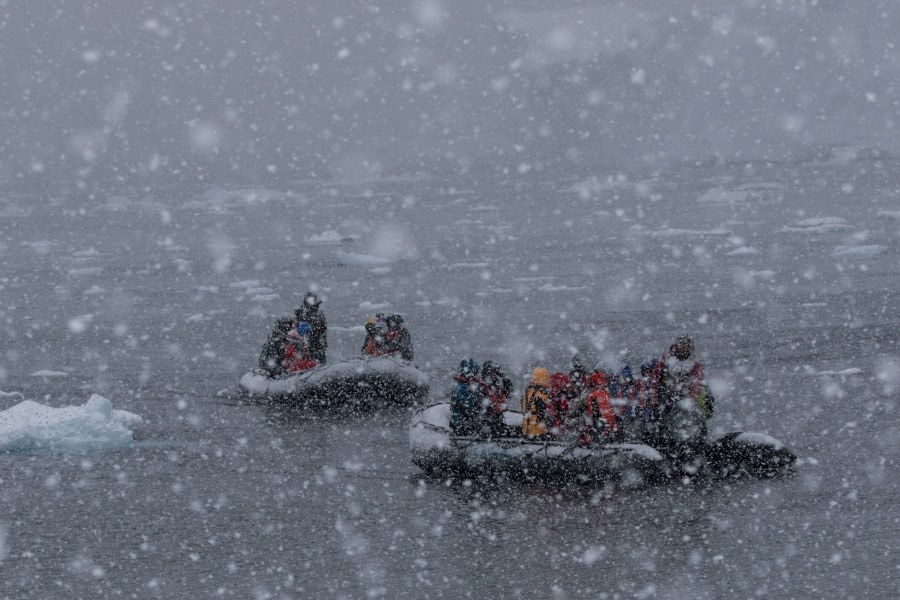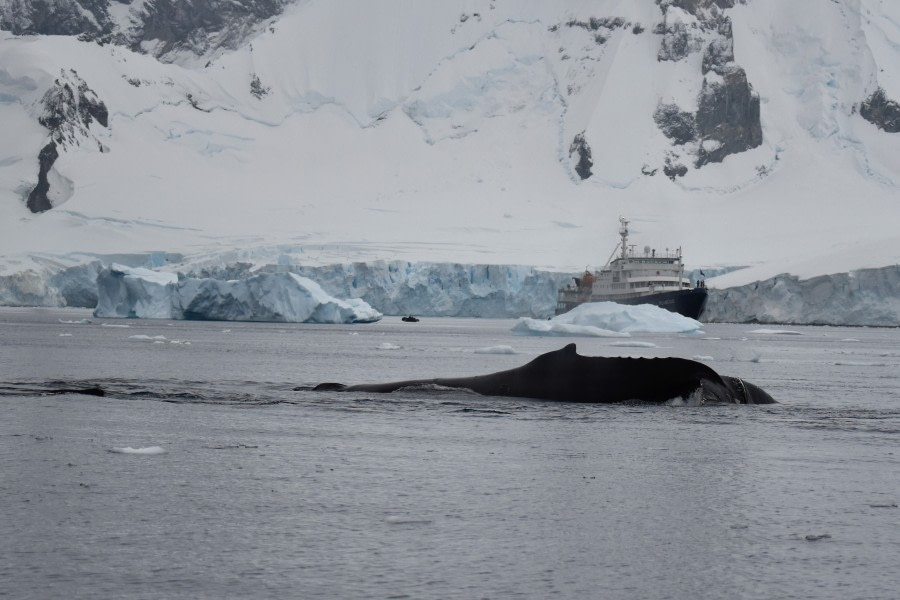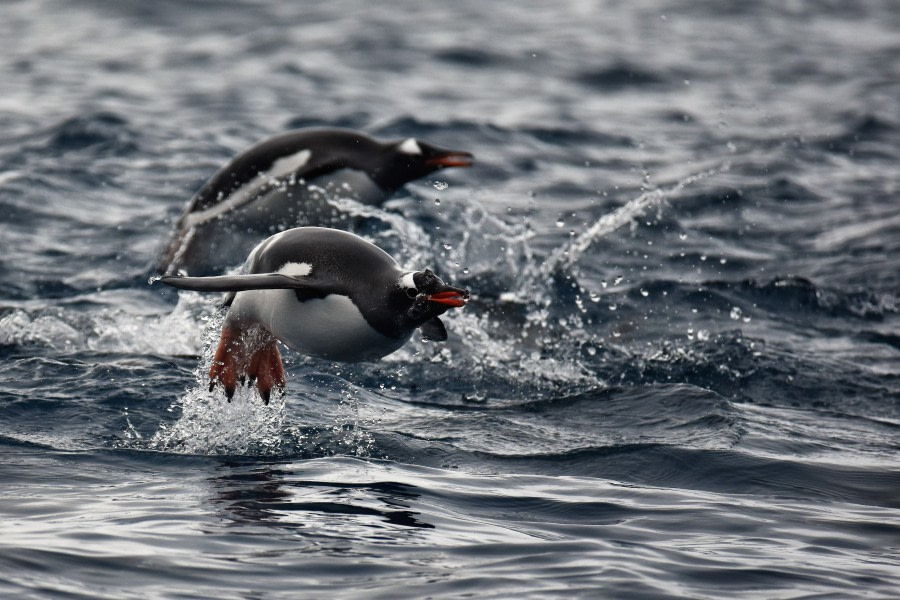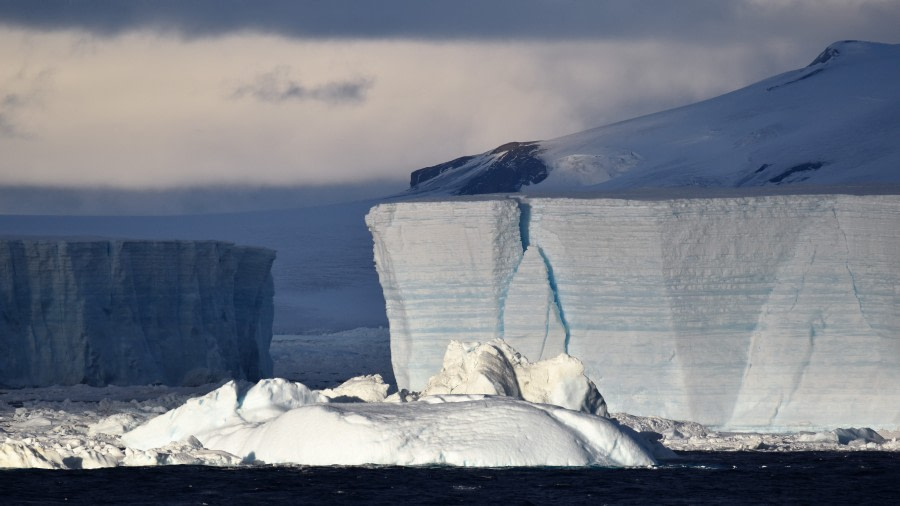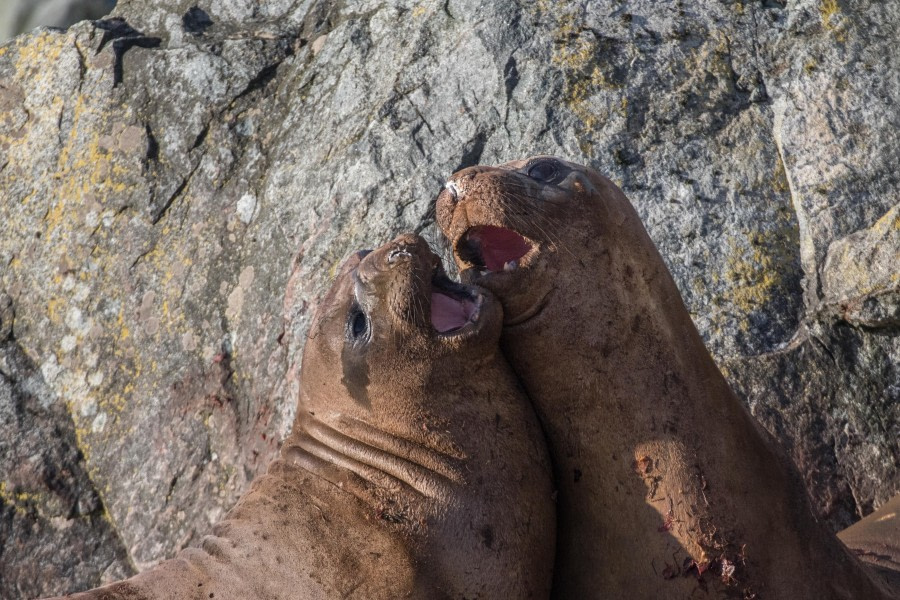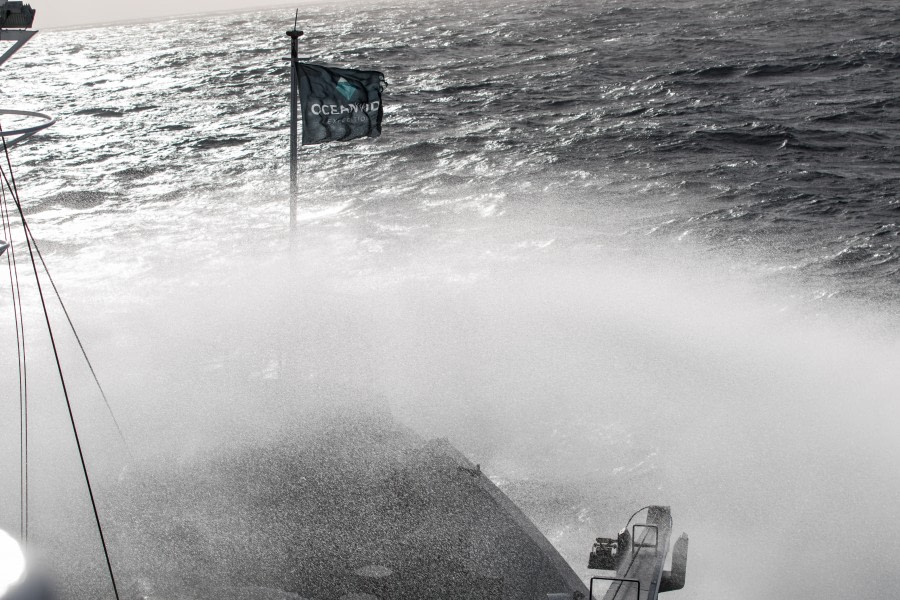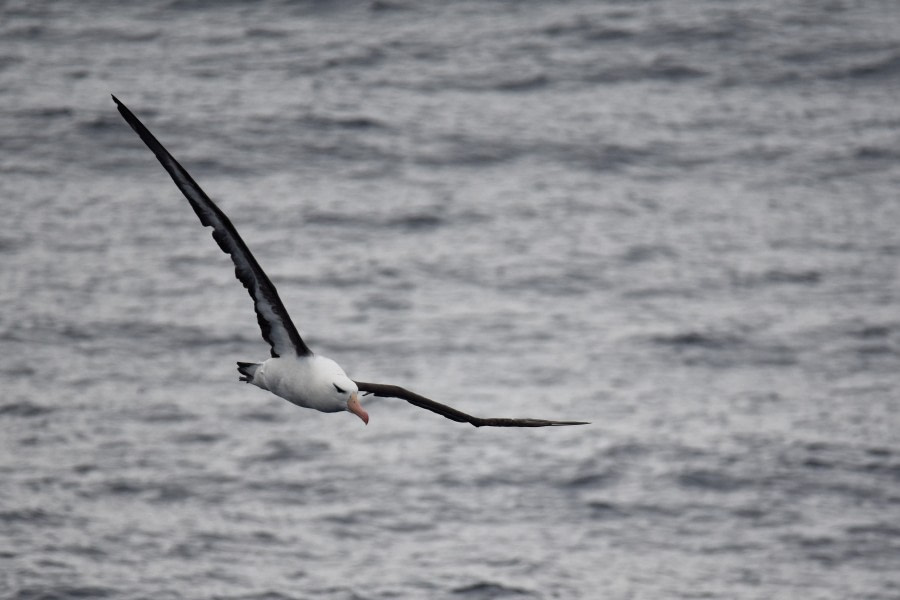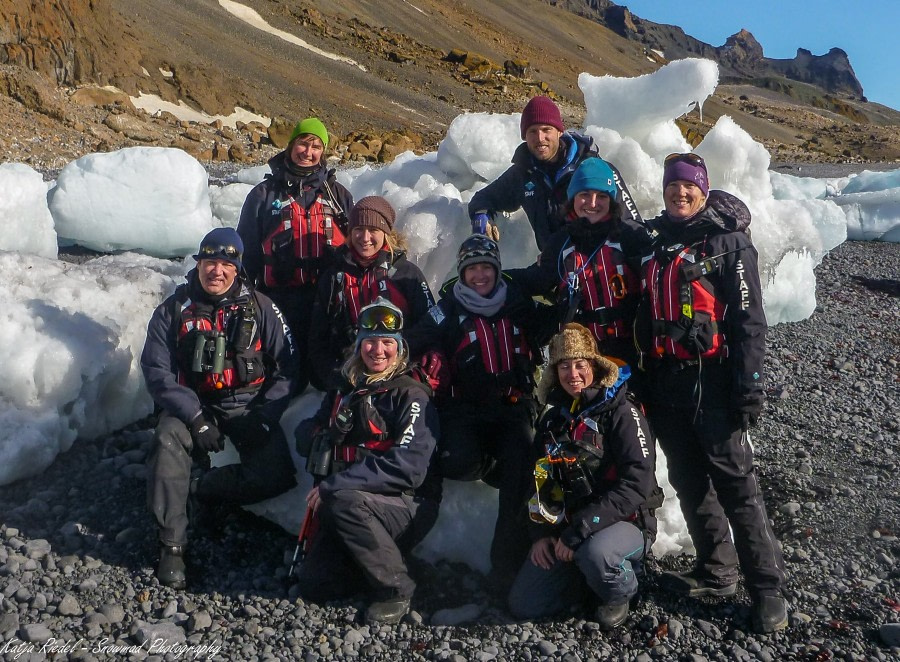| Date: |
18.03.2019 |
| Position: |
63 °25’S/056°44’W |
| Wind: |
ESE 2 |
| Weather: |
Partly cloudy |
| Air Temperature: |
0 |
The morning dawned clear with only a thin layer of high-altitude clouds blocking the blue beyond, promising a lovely morning for our landing at Brown Bluff. As forecast, the winds had died down and after the team’s scout boat had gone to shore it became clear that the landing was a go. As we approached the beach—navigating through icebergs and brash ice on the zodiacs-- we saw the team had found a small break in the large bergy bits clogging the entire beach front. It was through this narrow channel we were able to sneak ashore to enjoy an incredible morning on the continent. The brown and gold cliffs behind the beach created an impressive backdrop to the spectacle of molting gentoo in the foreground and then the black volcanic-rock beach covered with sparkling mounds of white and blue ice. Even though Brown Bluff is known for its adelie penguin colony, being so late in the season most of the penguins had already left out to sea. Thankfully the sharp eyes of the expedition team found us one or two adelie penguins so that we could appreciate this properly Antarctic penguin species before ending our trip. The Adelies were noticeably smaller than all the fat gentoo lazing around on the beach and uplands, and that short black bill and white eye ring help to create an unmistakable air of attitude surrounding their sturdy compact bodies. Everything was so relaxed on shore—penguins hanging around chilling out, fur seals lazing and flopping in the sun, people wandering amongst the stranded bergy bits … we should have brought a Sunday picnic to shore.
There were many folks, however, who opted for a more energetic activity, walking up a moraine slope to get a view point over and along a glacier. Walking along the track, it was surprising to notice that even on that steep rubbly slope there were bits and pieces of moss growing in and amongst the rubble—what hardy organisms! The rocky shoreline on either side of the landing site provided nice platforms from which to observe the surroundings in peace: Antarctic shags and juvenile kelp gulls flying to and from on their morning commute, fur seals playing in the water or adjusting position during a brief nap break, and even our fellow humans exploring and pausing every now and again to capture some sight or detail as a treasured digital memory. Even after four hours on shore it felt too soon to head back to the ship. But really we were just in time as the tide was rising and bergy bits were beginning to move into shore—the last boat to leave the shore just squeaked through between two large chunks of ice that were about to close off the passage to open water. Nicely done, everyone!
It was difficult to be indoors once back on the ship as the sun was shining, showing off Antarctica in all its finest. We were on our way deeper into the Weddell Sea to see what we could see. After an excellent lunch, the decks were busy with folks enjoying the scenery and spectacle of ice on the horizon … but much nearer than yesterday! In the night, the currents brought the drifting ice further into Antarctic Sound, where we were not able to get much further than level with Rosamel Island, where we had passed her by several miles on our cruise of yesterday. It was a great example of how much condition can change day to day, and even minute by minute as we were to experience later. A call came of a dead whale to port, being fed upon by flocks of giant petrels. A bit of a gruesome sight, but interesting to think about how many organisms will benefit from this huge windfall of sustenance—everything from the GPs and skuas ripping and tearing chunks from the carcass and on down to the Wilson storm petrel going after floating scraps and all manner of zooplankton who would be filter feeding up all the tiny bits and pieces.
It was decided to go for a zodiac cruise in this spot to take advantage of such a concentration of species—but by the time all the boats were in the water it was apparent that the currents in the area were strong and moving the ice in complicated ways. More concerningly the ship was slowly drifting towards shallow waters and so had to relocate to more open and deeper waters. By the time passengers were loaded the ice had closed in around the carcass and feeding frenzy so it turned out the ship had been the best viewing platform which is often the case. This did not deter our trusty guides, however, as there is always something interesting to find, one just has to look with open eyes and minds. The afternoon cruise was excellent! Several seals on ice were seen including a close-up view of crabeater and fur seals, and a special time with a “pretty dead” leopard seal, who lazed and stretched and then showed off how big and wide its mouth could really stretch and just how many teeth it really had!
The team gave us special treat—getting to land on an ice floe! It seemed easy enough to run the zodiac up on the edge of the ice, surprisingly the edge was quite firm and held the boats while we all got out and took a walk around. It was a bit surreal to notice that the floe was moving as we were on it; perhaps more than one person was glad to get back to the safety of the zodiac. The cruise continued through more and more ice, it was so incredible to look out over glassy calm water to endless views of ice, ice, and more ice. And so many shapes and sizes! Long flat floes of sea ice—where you could see layers of snowfall lying on top of the denser bluer ice frozen from the sea, big bulky glacier-calved icebergs, ice chunks so blue that we knew they had to come from the bottom of a glacier to get all the air bubbles squeezed out, and everything in between. So many different sculpted forms, it’s likely that many memory cards were maxed out by the end of the day. Just when we were feeling a bit cold and finally on the way back to the ship after a three hours tour … whales were sighted, again! Some were gifted with a lucky encounter just off the ship’s bow and as the humpbacks swam away it felt like they were giving us a sweet send off farewell on what would now be our return journey north.
This day was not over yet, the scenery continued to astound as the sun grew lower in the sky, the water was calm, and the ice provided endless variation for photographs. Out on deck, smiles and eyes got bigger and bigger as the colors got deeper and more intense—blues, purples, pinks, orange … could it get any better? Of course—orcas were spotted off the bow and graced us with their presence for a few moments. And then, what is that there—is that a space ship? No, it was the moon, rising orange and alien-like above the distance icy landscape. Everywhere you turned there was something amazing happening, so hard to take in and process. Michael sure had a difficult time encouraging folks to come in to dinner but eventually the pull of a warm hearty meal and the ever-decreasing temperatures on deck combined to bring everyone to the table. The dining-room scene was a boisterous affair, with spirits high after such an incredible day. The evening came to a close with an after-dinner recap, touching on the finer points of the day—as if we needed reminding of how stunning it all was! Our rest tonight would be the sleep of contentment, with still a slight buzz of how fortunate we have been … and bittersweet thoughts of our final landing tomorrow.
